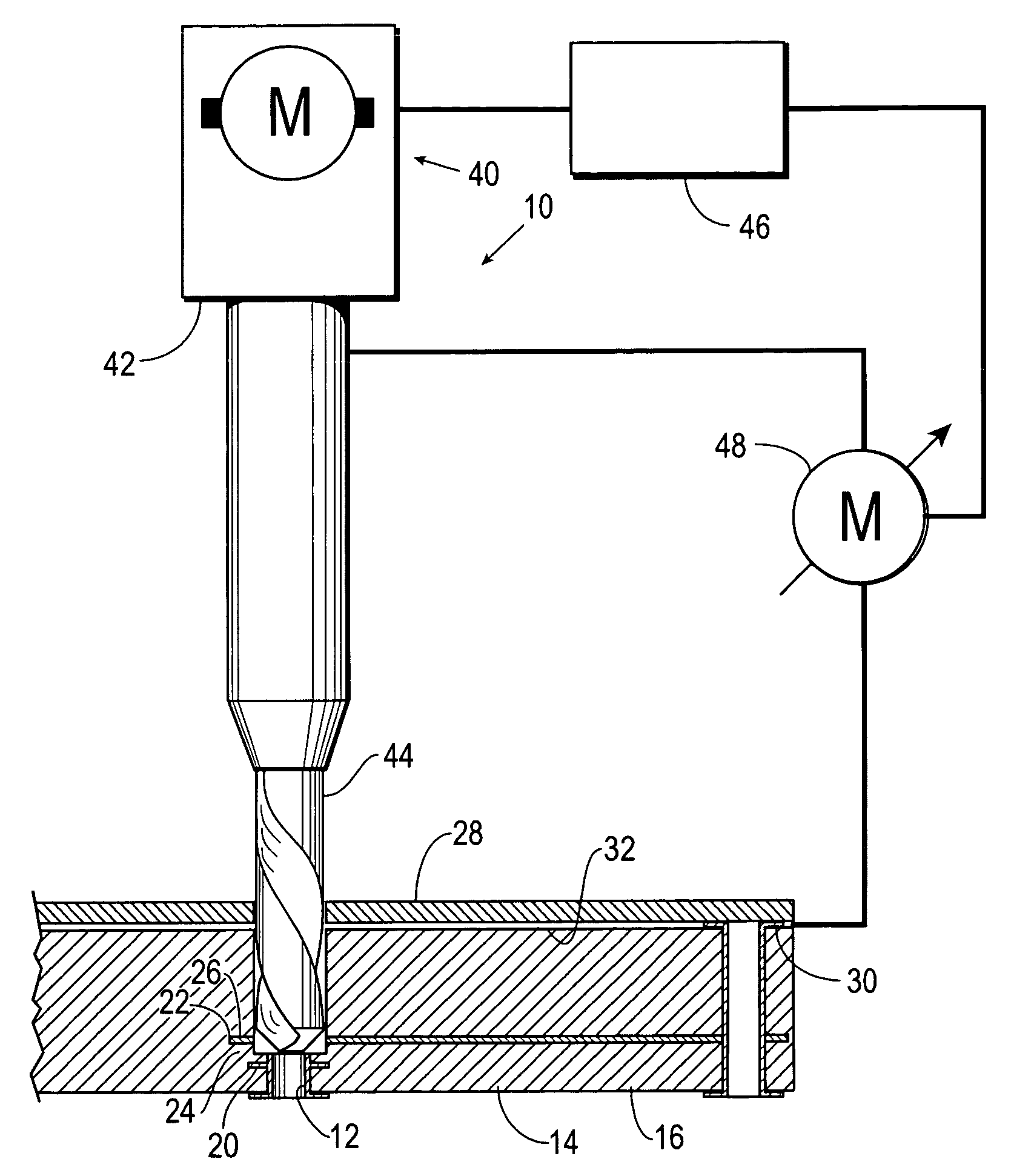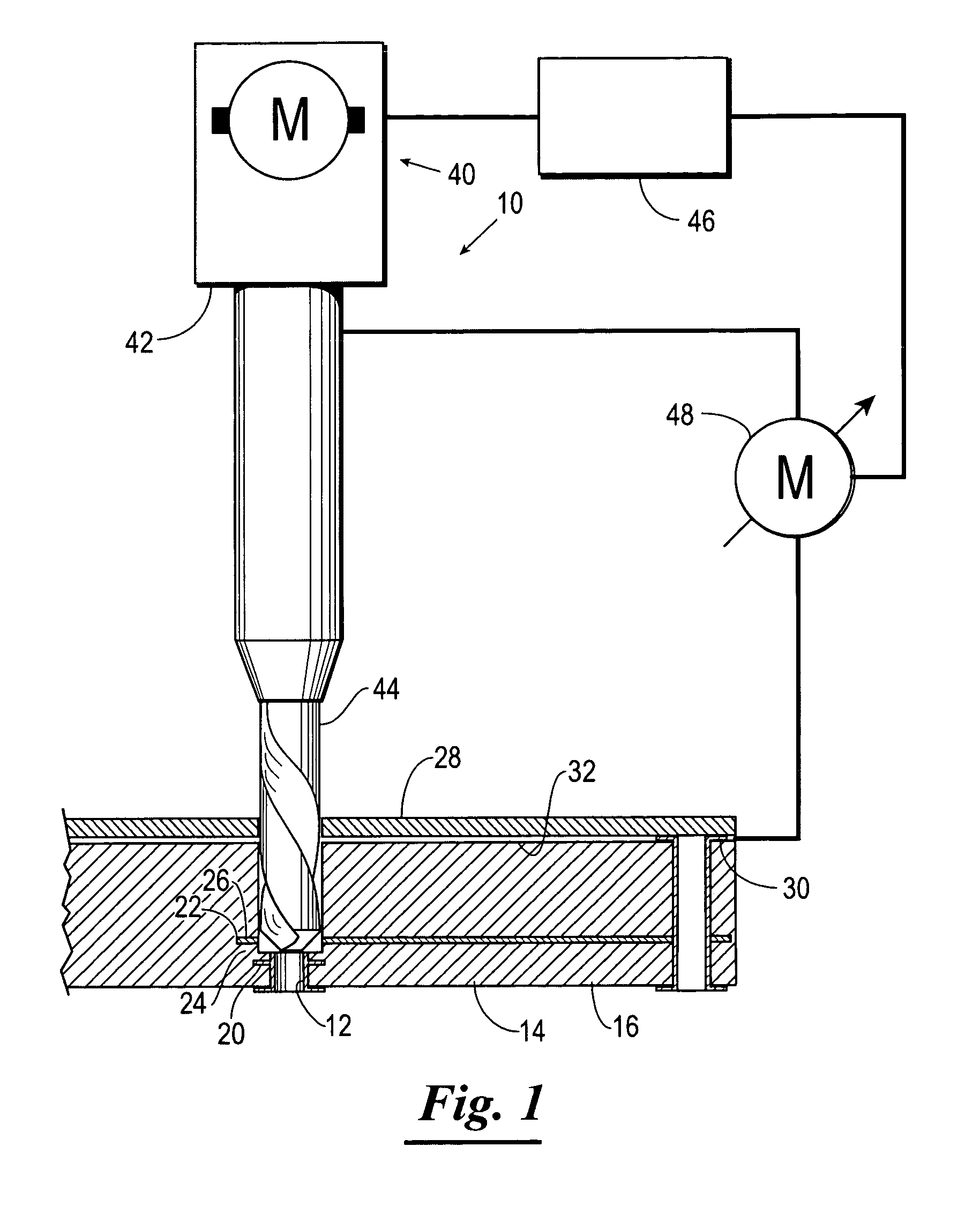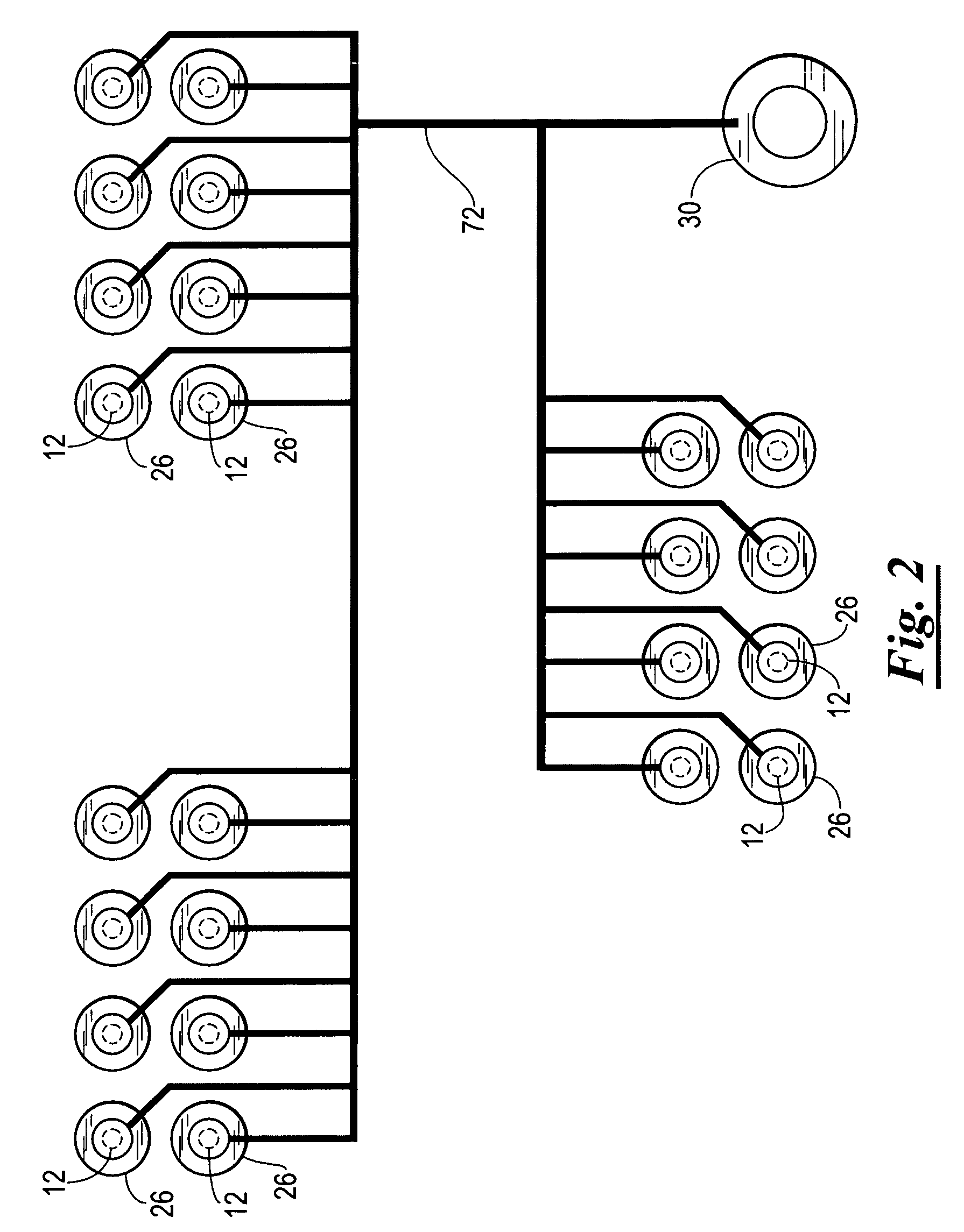Closed loop backdrilling system
a backdrilling system and closed loop technology, applied in emergency protective circuit arrangements, waveguides, etc., can solve the problem of changing the amount of stub portion which needs to be removed, disconnecting the signal layer, and uneven thickness of the various layers of the multi-layer circuit board
- Summary
- Abstract
- Description
- Claims
- Application Information
AI Technical Summary
Benefits of technology
Problems solved by technology
Method used
Image
Examples
Embodiment Construction
[0018]Referring now to the drawings and in particular to FIG. 1, shown therein and designated by a reference numeral 10 is a closed loop backdrilling system constructed in accordance with the present invention. The closed loop backdrilling system 10 is used for depth drilling an already plated hole 12 formed in a workpiece 14 using electrical feedback from the workpiece 14 when a certain or predetermined depth is reached. The feedback during the drilling process makes it possible to yield much higher accuracy independent of the depth of a particular layer within the workpiece 14. In one preferred embodiment, the workpiece 14 is a multilayer printed circuit board 16. Although the workpiece 14 will be described herein as the multilayer circuit board 16, it should be understood that the workpiece 14 can be any apparatus, or device where it is desirable to drill to a certain or predetermined depth within the apparatus or device.
[0019]The multilayer circuit board 16 is provided with at l...
PUM
| Property | Measurement | Unit |
|---|---|---|
| diameter | aaaaa | aaaaa |
| non-conductive | aaaaa | aaaaa |
| area | aaaaa | aaaaa |
Abstract
Description
Claims
Application Information
 Login to View More
Login to View More - R&D
- Intellectual Property
- Life Sciences
- Materials
- Tech Scout
- Unparalleled Data Quality
- Higher Quality Content
- 60% Fewer Hallucinations
Browse by: Latest US Patents, China's latest patents, Technical Efficacy Thesaurus, Application Domain, Technology Topic, Popular Technical Reports.
© 2025 PatSnap. All rights reserved.Legal|Privacy policy|Modern Slavery Act Transparency Statement|Sitemap|About US| Contact US: help@patsnap.com



